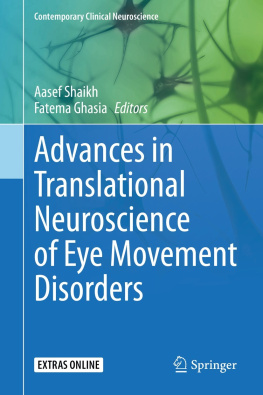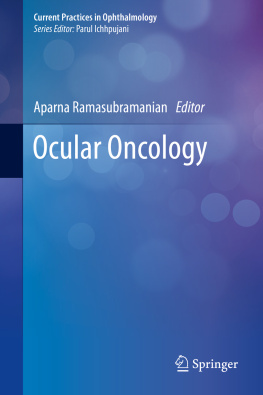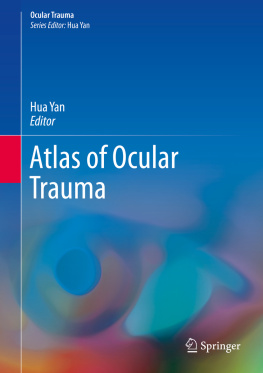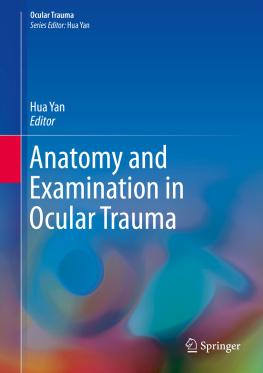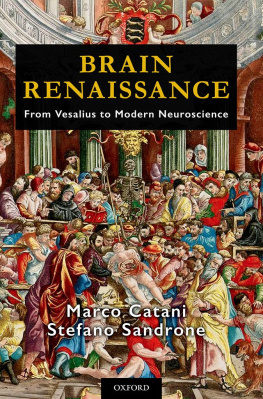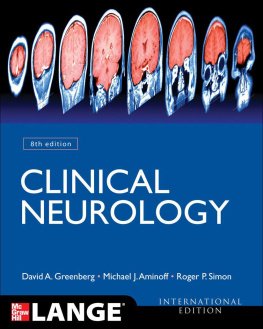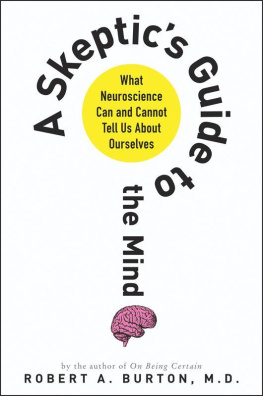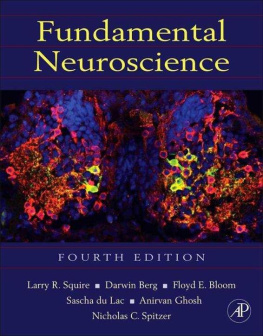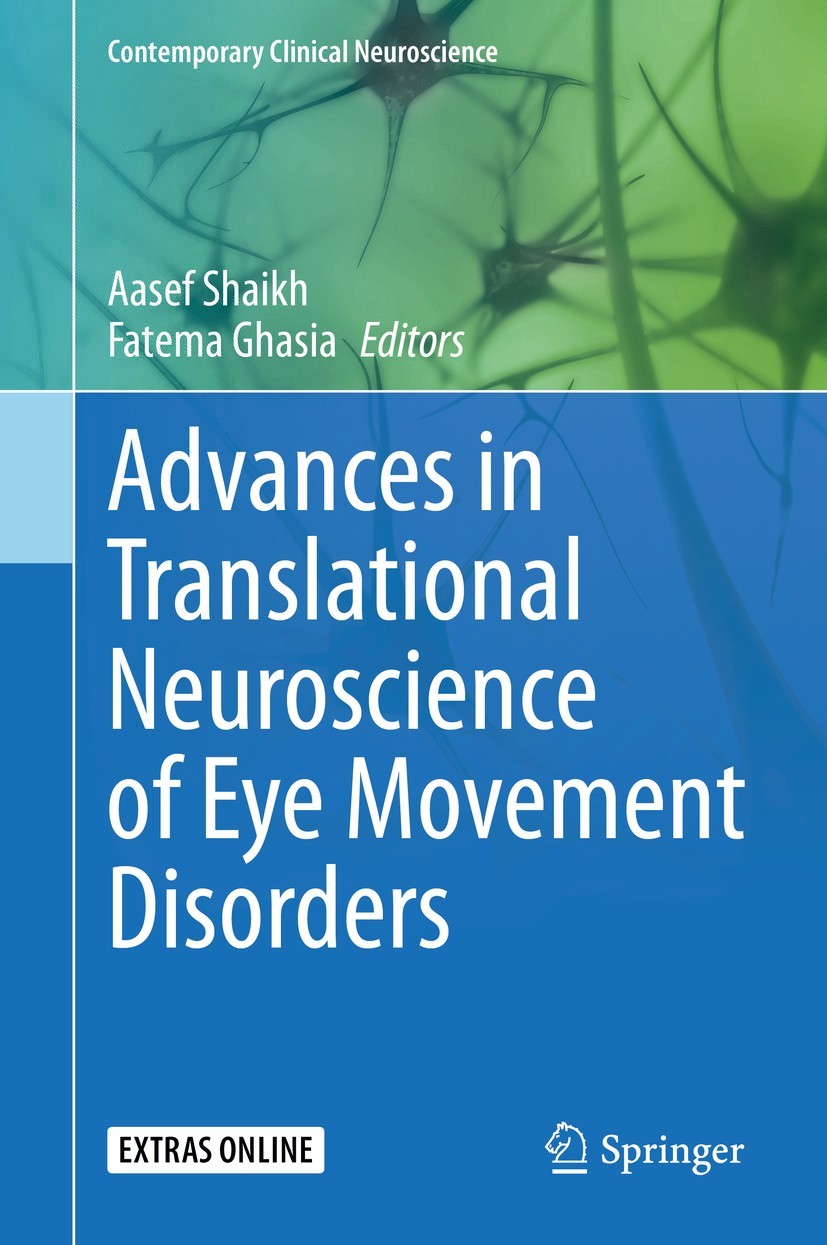Contemporary Clinical Neuroscience
Series Editor
Mario Manto
Division of Neurosciences, Department of Neurology, CHU-Charleroi, Charleroi, Belgium
University of Mons, Mons, Belgium
Contemporary Clinical Neurosciences bridges the gap between bench research in the neurosciences and clinical neurology work by offering translational research on all aspects of the human brain and behavior with a special emphasis on the understanding, treatment, and eradication of diseases of the human nervous system. These novel, state-of-the-art research volumes present a wide array of preclinical and clinical research programs to a wide spectrum of readers representing the diversity of neuroscience as a discipline. Volumes in the series have focused on Attention Deficit Hyperactivity Disorder, Neurodegenerative diseases, G Protein Receptors, Sleep disorders, and Addiction issues.
More information about this series at http://www.springer.com/series/7678
Editors
Aasef Shaikh and Fatema Ghasia
Advances in Translational Neuroscience of Eye Movement Disorders
1st ed. 2019

Logo of the publisher
Editors
Aasef Shaikh
Neurological Institute, University Hospitals Neurology Service, Louis Stokes Cleveland, VA Medical Center, Department of Neurology, Case Western Reserve University, Cleveland, OH, USA
Fatema Ghasia
Pediatric Ophthalmology, Cole Eye Institute, Cleveland Clinic, Cleveland, OH, USA
ISSN 2627-535X e-ISSN 2627-5341
Contemporary Clinical Neuroscience
ISBN 978-3-030-31406-4 e-ISBN 978-3-030-31407-1
https://doi.org/10.1007/978-3-030-31407-1
Springer Nature Switzerland AG 2019
This work is subject to copyright. All rights are reserved by the Publisher, whether the whole or part of the material is concerned, specifically the rights of translation, reprinting, reuse of illustrations, recitation, broadcasting, reproduction on microfilms or in any other physical way, and transmission or information storage and retrieval, electronic adaptation, computer software, or by similar or dissimilar methodology now known or hereafter developed.
The use of general descriptive names, registered names, trademarks, service marks, etc. in this publication does not imply, even in the absence of a specific statement, that such names are exempt from the relevant protective laws and regulations and therefore free for general use.
The publisher, the authors and the editors are safe to assume that the advice and information in this book are believed to be true and accurate at the date of publication. Neither the publisher nor the authors or the editors give a warranty, expressed or implied, with respect to the material contained herein or for any errors or omissions that may have been made. The publisher remains neutral with regard to jurisdictional claims in published maps and institutional affiliations.
This Springer imprint is published by the registered company Springer Nature Switzerland AG
The registered company address is: Gewerbestrasse 11, 6330 Cham, Switzerland
Preface
Eye movements are the window to the brain and mind. They serve as an important diagnostic marker, surrogate to modern imaging technology. The study of ocular motor behavior can examine the physiology of the human brain. This book, Advances in Neuroscience of Eye Movements, is about basic, translational, and clinical science of eye movements and is dedicated to David A. Robinson a pioneer in the field who invented one of the reliable method for measuring eye movements and systematically studied and quantified the electrophysiological properties of eye movement-related neurons from the frontal eye fields to the superior colliculus to ocular motoneurons. Dr. Robinson was one of the first to interpret behavioral and electrophysiological properties of the ocular motor system using mathematical models. He was also a translational scientist before that term was coined, successfully bringing basic science and computational techniques to account for clinical disorders.
Eye movements have been studied for at least two centuries, before the time of David Robinson. However, the primary focus of eye movement literature has changed over time. Early literature emphasized disease phenomenology and subjective descriptions of various ocular motor abnormalities. Several decades later, scientists and engineers, such as David Robinson, were enticed by the simplicity and elegance of ocular motor physiology. Computational rigor, physiological elegance, and clinical utility of the eye movement literature attracted neurologists, otolaryngologists, and ophthalmologists. Application of ocular motor physiology in the clinical arena grew exponentially in the last two decades of the twentieth century. Many diseases of the human brain that affect eye movement were readily explained by computational and physiological concepts of ocular motor control models. The neuroscience of eye movement, depth of physiological understanding, and computational explanation for almost every aspect of these movements had a natural next step to extend these concepts and study neural control of other motor behavior and dysfunction. Simultaneously, there was an unprecedented growth of portable and user-friendly technology to precisely and cost-effectively measure the eye movements. With the development of data acquisition systems, along with the growing interest of non-motor scientists, the study of eye movements made yet another leap into human cognition and behavior applications. The interaction and common interest of engineers, physicians, biologists, and psychologists were instrumental in the multidisciplinary growth of ocular motor research. This volume, Advances in Neuroscience of Eye Movements, reflects the truly multidisciplinary nature of the ocular motor field.
Aasef Shaikh
Fatema Ghasia
Cleveland, OH, USA Cleveland, OH, USA
Contents
David S. Zee , Mark J. Shelhamer , R. John Leigh and Lance M. Optican
Part IBasic Science
Tatyana A. Yakusheva
Heiko M. Rust , Barry M. Seemungal and Amir Kheradmand
Alexander A. Tarnutzer
Bryan K. Ward
Jorge Otero-Millan
Stefano Ramat
Vallabh E. Das
Part IITranslational Science
Americo A. Migliaccio and Michael C. Schubert
Jeong-Yoon Choi and Ji-Soo Kim
Kelsey Jensen and Aasef Shaikh
Janet C. Rucker , Todd Hudson and John Ross Rizzo
Lawrence Tychsen
Nataliya Pyatka and Fatema Ghasia
Part IIIClinical Science
Georgios Mantokoudis , Daniel R. Gold and David E. Newman-Toker
Jorge C. Kattah
David J. Szmulewicz
Benjamin Nham , Leigh A. McGarvie , Rachael L. Taylor and Miriam S. Welgampola
Salil Patel , Maksymilian A. Brzezicki , James J. FitzGerald and Chrystalina A. Antoniades
Ali G. Hamedani and Daniel R. Gold
Alessandra Rufa and Francesca Rosini
Caroline Tilikete and Matthieu P. Robert
Lauren Cameron and Camilla Kilbane
Macym Rizvi and Fareeha Ashraf

